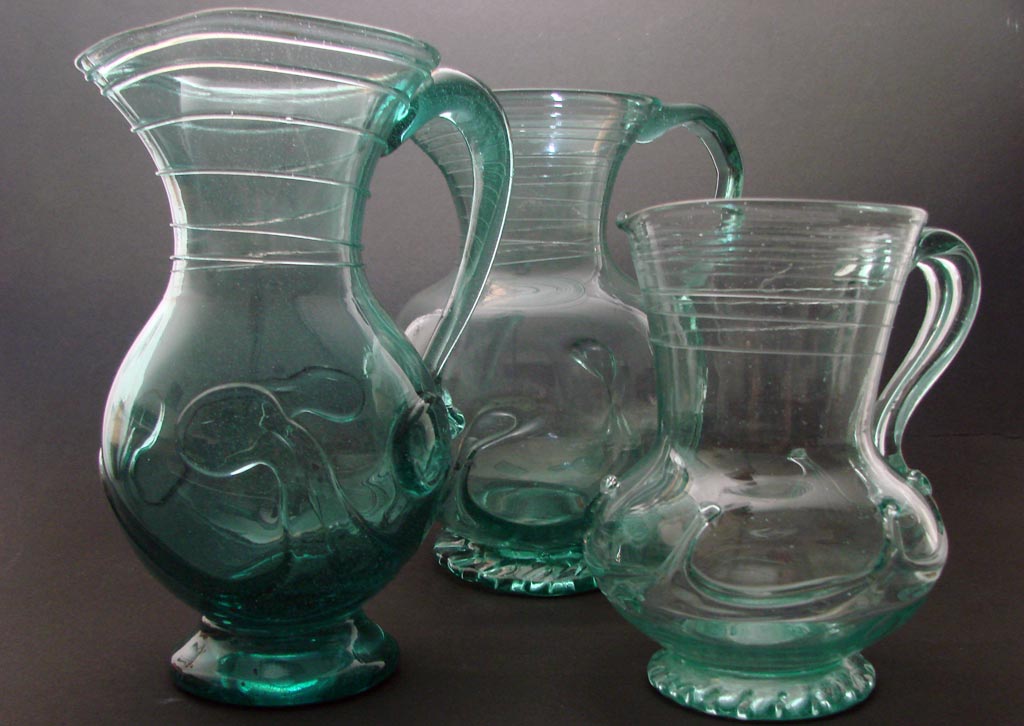
WheatonArts holds collections in the following areas:
Historic American Glass
This collection represents the mission of the Museum of American Glass “to collect, preserve. and interpret the full range of glass made in the United States.” The collection encompasses all areas of American glass. A particular focus is the preservation of the Mid-Atlantic glass industry, especially reflecting the New Jersey glass tradition, through a collection of objects, tools, equipment, company records, photos and ephemera.
Contemporary Glass Art
WheatonArts maintains a collection of fine art consisting of one-of-a-kind or limited series works created by artists utilizing glass, generally after 1960. Many pieces come from the Creative Glass Fellowship Program, representing the time the artist spent at WheatonArts during their fellowship, and the collection includes documentation of the processes, techniques, and materials used.
Multicultural Traditional Arts
This collection represents the mission of the Down Jersey Folklife Program “to research, document, and present traditional cultures in New Jersey’s southern eight counties.” These works demonstrate culture-based aesthetics, meanings, and values, as well as application of old techniques, patterns, and motifs as interpreted in the context of the present-day cultural landscape of our region.
Pottery
This legacy collection stems from the purchase in 1972 by founder Frank Wheaton Jr. of Stangl Pottery, a New Jersey based pottery with origins going back to 1814. The 3,580 pieces of pottery plus related ephemera were removed from the factory in Trenton, NJ and/or the storeroom in Flemington, NJ and added to the collection at WheatonArts.
Early American Craft and Industry
This legacy collection of non-glass related items remains from the founder’s undeveloped vision of a “living history” village. Many items were used in the former “Crafts and Trades Row” displays, which featured working artists demonstrating early trades. It consists of equipment and tools used in blacksmithing, printing, and weaving among others.
Miscellaneous
This legacy collection stems from the institution’s iteration as historically themed tourist attraction with faux Victorian scenes embellished with items donated as well as purchased from flea markets and estate sales.
WheatonArts cares for these collections in the following ways:
Permanent
Permanent artifacts are accessioned objects of considerable historic, artistic, cultural or monetary value. The primary use for permanent artifacts is interpretive exhibition and scholarship. Permanent artifacts are never used for hands-on demonstrations and may be lent to other institutions under compliance with conditions for out-going loans. They are catalogued and their condition preserved and conserved.
Archives
The archives consist of historical documents, photographs, oral histories, and other media. These materials generally are not stable enough for exhibition use, but copies may be used in exhibits or for other educational purposes. Archival pieces are to be treated as permanent – catalogued and their condition preserved and conserved.
Hands-on Educational, Exhibit, and Studio Support
Support pieces are replaceable objects that are seen to be “consumable” in service to the educational goals of WheatonArts thus can be used and modified.
Library and Research Files
The library and research files consist of books, journals, articles and other media that have been acquired for study by staff, artists, and researchers.
Donation of artifacts:
If you would like to donate an object that you think would be appropriate in the collections of WheatonArts, please contact collections@wheatonarts.org or 856.825.6800 ext.142 to discuss the item. Please do not bring it to WheatonArts until you have spoken with a curatorial staff member. Our Collections Policy, as approved by the Board of Trustees, requires that possible donations be brought before the Exhibitions and Collections Committee at their quarterly meeting for approval before being acquired for the collection.
Curatorial staff members are sensitive to the emotions attached to objects donated to WheatonArts and respect for the donor’s feelings is always a consideration. However, due to capacity issues related to the limitations of storage and display area, and the costs of maintaining artifacts, WheatonArts may not be able to accept the donation.
We also consider provenance, or who used it and when, the maker, the condition of the piece, its usefulness for exhibition or research, and duplication when determining whether to make the commitment to accept an artifact into the collections.
If the Exhibition and Collections Committee agrees that the item is in keeping with the mission of WheatonArts, a curatorial staff member will contact you to coordinate delivery of the artifact. When you donate an item, you will be asked to sign an agreement that you relinquish ownership of the artifact to WheatonArts. You can rest assured that any item placed into the custody of WheatonArts will have a lasting benefit to WheatonArts and the community.

